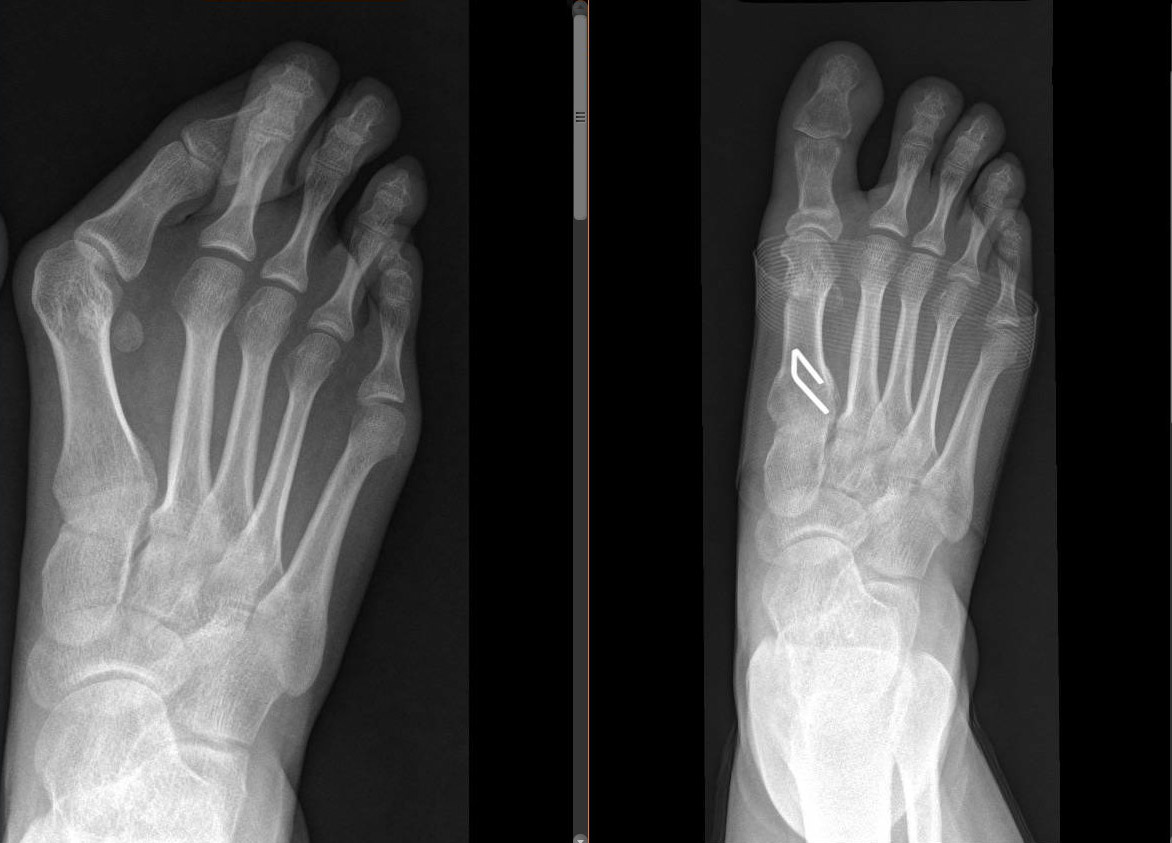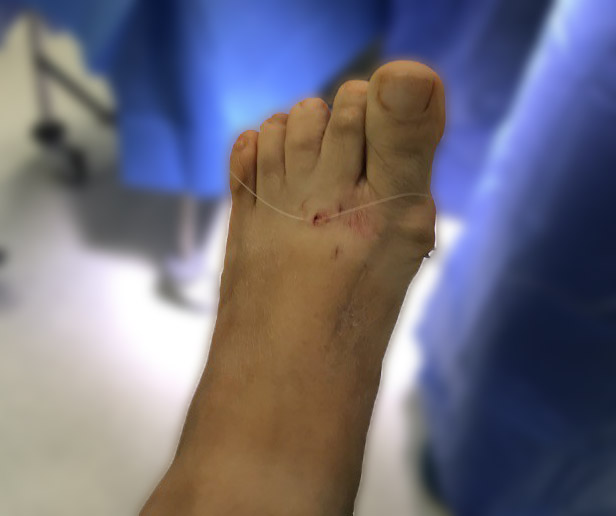Percutaneous foot surgery
The percutaneous surgery is one of the most important developments in the last few decades regarding foot surgery. This is a technique in which it is possible to correct deformities and other problems with minimal incisions of about 3 or 4 mm, instead of using the traditional 5 or 6 cm incisions, reducing the post-op pain, getting a better aesthetic result and an earlier comeback to the daily activities.
Previously painful procedures, often associated with gross scars are now performed as ambulatory interventions performed with local o regional anesthesia , allowing the partient to make weight bearing from the first postoperative day and leave almost imperceptible scars.
Percutaneous surgery indications
- Bunions—Hallux valgus
- Tailor’s Bunion
- Metatarsalgia
- Plantar fasciitis – heel spur
- Morton’s neuroma
- Hammer toes and other minor deformities in the toes
Advantages
- It does not require hospitalisation
- It is not necessary to implant plates or screws
- It allows walking immediately after the post-op
- A better aesthetic result
- Local or regional anaesthesia
- Less post-op pain


Intraoperative photo Incisions used in percutaneous surgery
- Category
- Orthopedic Surgery and Traumatology
